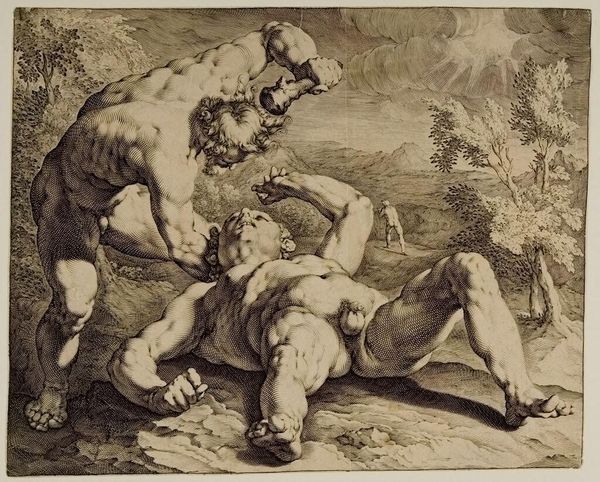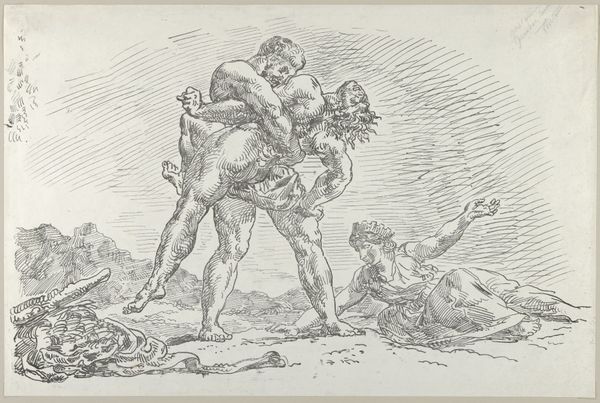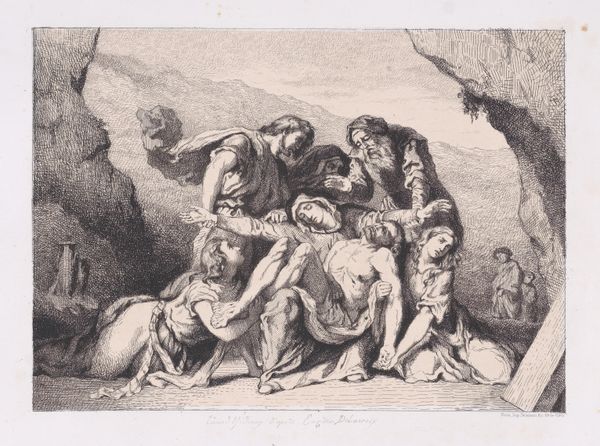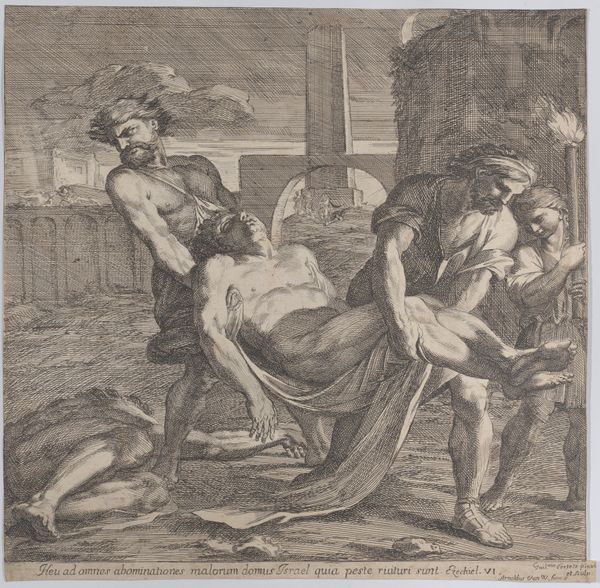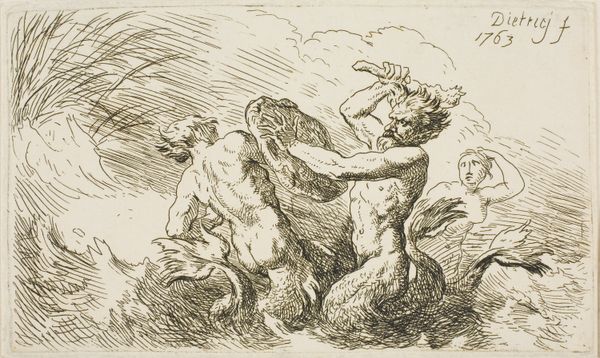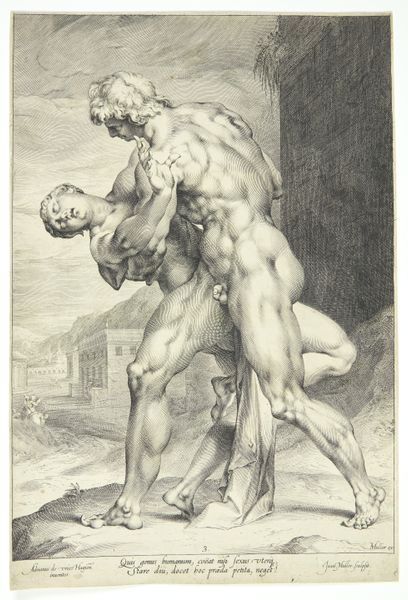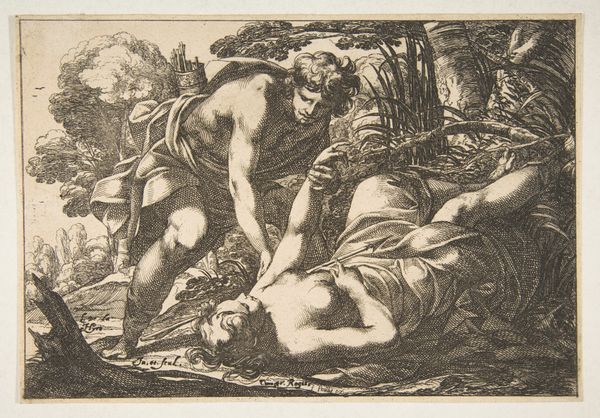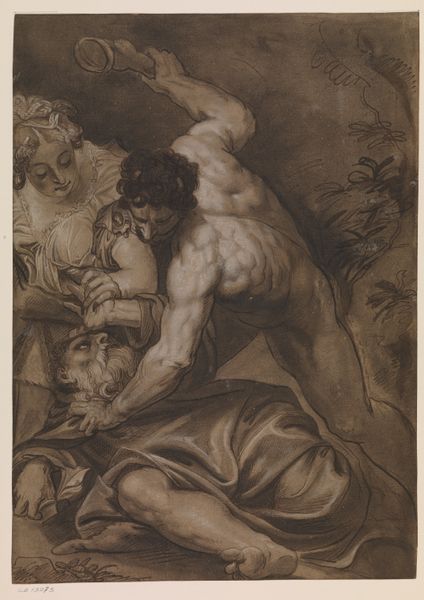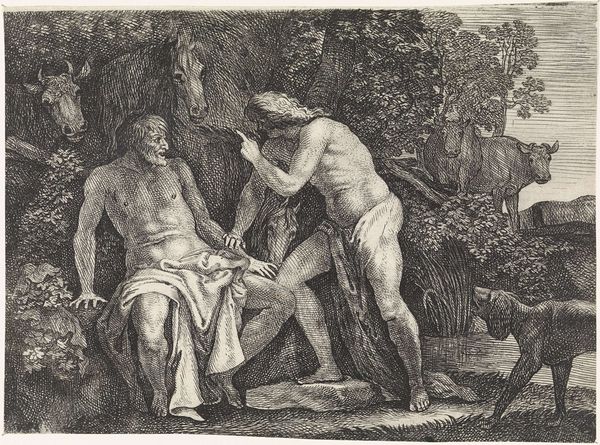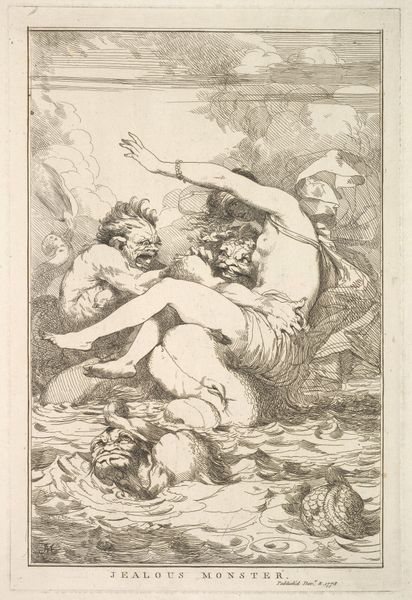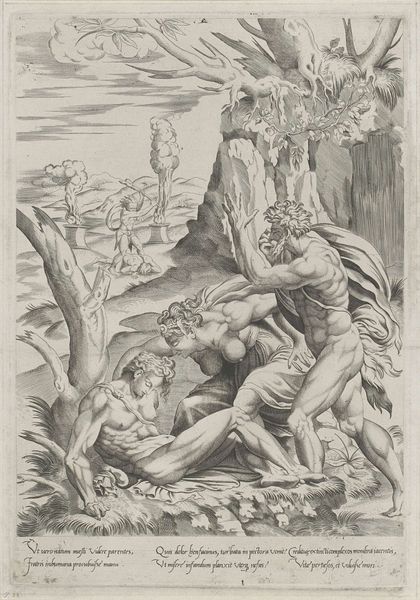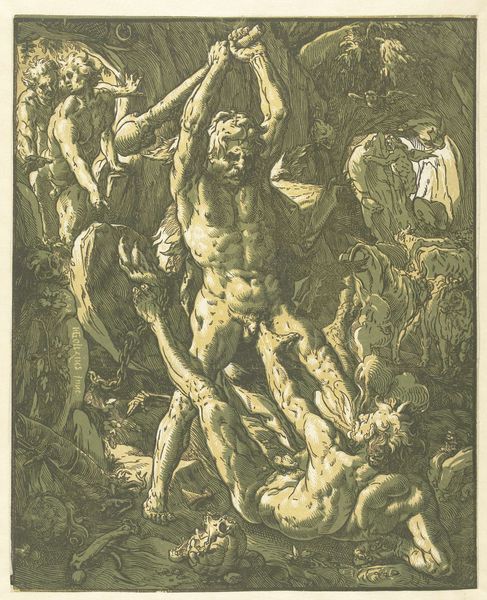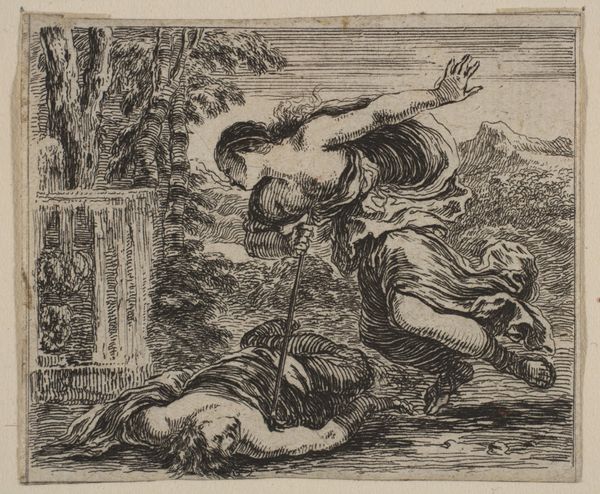
drawing, print, engraving
#
drawing
#
narrative-art
# print
#
landscape
#
mannerism
#
figuration
#
line
#
history-painting
#
academic-art
#
engraving
Dimensions: 33.3 x 41.5 cm (trimmed – lacking inscription below)
Copyright: Public Domain
Curator: Jan Muller's 1589 engraving, "Cain Killing Abel," depicts the biblical narrative with a strikingly dramatic flair. The work is currently held at the Metropolitan Museum of Art. Editor: My initial reaction is that the violence feels so monumental and theatrical here. The exaggerated musculature and dynamic posing really heighten the tension. Curator: Absolutely. Muller employs a Mannerist style, emphasizing elongated forms and complex compositions. Notice how the bodies are rendered with meticulous detail, creating a palpable sense of depth. The linework itself contributes significantly to the overall texture and form. Editor: It's fascinating how the artist chose to depict Cain and Abel, physically. There's an overtone here, maybe the strong-man’s strength stands for the overwhelming force of jealousy and wrath overcoming reason or good. It's not just a murder scene; it embodies the destructive power of envy. It mirrors cultural associations, wherein strong equates with wrong, weak with right. Curator: Precisely! Muller uses the figures' posture and the landscape as expressive devices. The high viewpoint, the landscape opening up in the background... the artist is showing this momentous event and suggesting larger implications to what would, to us, seem to be a simple murder. It is charged with biblical context to showcase disobedience with catastrophic impact. The lone figure in the landscape really highlights this implication. Editor: The landscape adds another layer. That distant figure underscores the solitude, maybe a reflection of the isolation and existential crisis of primal sin, a severance not just from another human but from some essential connectivity that binds humankind with nature and purpose. Curator: An excellent point. By isolating Cain, Muller emphasizes his alienation. The engraving really prompts reflection on the narrative’s symbolic and theological ramifications. Editor: Agreed. Looking closely, the artist isn't only representing the first murder; they delve deeply into representing moral deterioration. Thanks to its dynamic composition and rich symbolism, it has a strong story to tell. Curator: Well said. I'd argue its formalism creates, and directs, the artwork’s strong symbolism to create a captivating depiction of biblical tragedy.
Comments
No comments
Be the first to comment and join the conversation on the ultimate creative platform.
